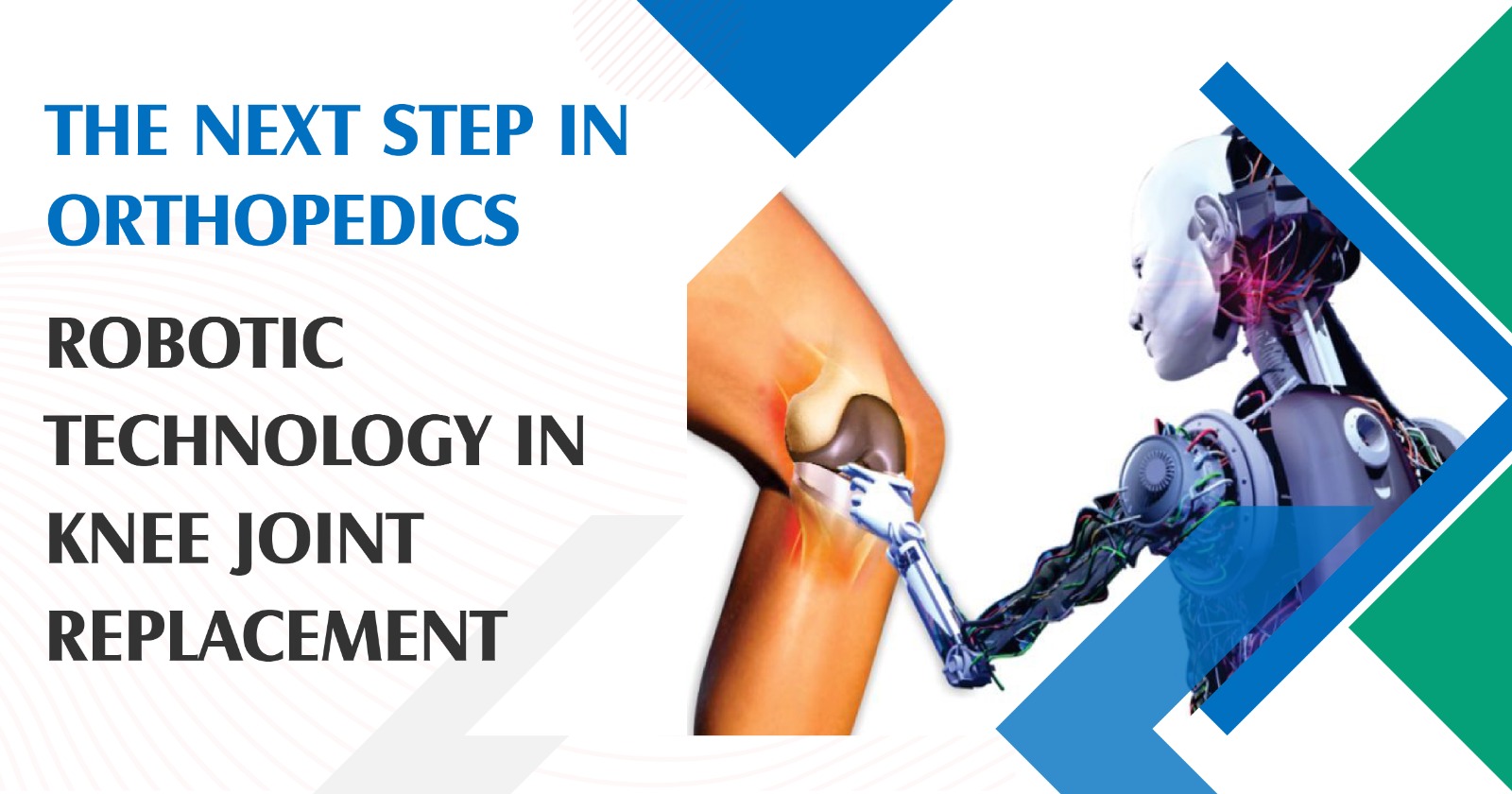The Next Step in Orthopedics: Robotic Technology in Knee Joint Replacement

Knee joint replacement, or arthroplasty, is required in conditions like arthritis, injury, or any other debilitating condition affecting the knee. These conditions severely impact the patient's quality of life, thus requiring a knee replacement procedure.
Knee joint replacementor arthroplasty, involves replacing the current defaulting knee joint with an artificial one, thus improving an individual's lifestyle.
According to various estimates, the number of knee replacement surgeries performed in India is over 150,000 to 200,000 procedures per year, which is expected to increase in the coming years. The procedure's failure rate is 5 to 6% in most national registries, and robotic technology aims to minimize the failure rate.
The robotic knee replacement helps the surgeon by providing more precision and accuracy. The robotic tools help create an ideal surgical plan, a perfect surgical incision, and joint alignment, thus improving the prognosis of the surgical procedure and patient satisfaction.
In robotic knee replacement surgery, the idea is to aid the surgeon and act as a guide, helping the surgeon plan out the procedure and improve the prognosis of the surgery.
The surgeon will discuss all the options for knee joint replacement and evaluate whether you are an ideal candidate for robotic knee joint replacement.
Complex cases employ robotic knee replacement, such as
? Femur deformity after injury.
? Complex degeneration.
? Hardware from a previous injury.
Advantages Of Robotic Knee Replacement Surgery
Robotic knee replacement surgery has various benefits, and thus, it is increasingly being employed in orthopedic centers to improve patient outcomes and assist surgeons.
? Greater precision: robotic knee surgery uses advanced imaging techniques to create a three-dimensional view of the surgical site. This technique helps the surgeon create personalized plans more accurately, eventually reducing complications and speeding up recovery.
? Optimal joint alignment: Several surgical procedures fail because the artificial joint is misaligned or dislodged. The robotic knee replacement attempts to overcome this disadvantage by placing the artificial joint according to the patient's anatomy. It improves the fit and alignment of the implant, which leads to improved functionality and longevity for joint replacement.
? Feedback: Surgical procedures might fail because of human errors. Specific feedback from the robot might help to overcome this. It is up to the physician to consider or disregard the input, but real-time feedback allows the surgeon to take a different approach, which he might not usually take. This feedback enhances the success rate of the surgery by enabling adjustments if needed.
? Surgical skills improvement: Robotic knee surgery also helps surgeons "prep up" before the surgery and avoid mishaps in the operating theatre. It allows them to work, practice, and improve their skills in a controlled and assisted environment.
? Recovery: Just like any other surgical procedure, robotic knee replacement surgery also has a recovery period that will help relieve post-surgery discomfort.
Robotic knee replacement surgery is less painful, faster to recover, and more patient-friendly. The robot-assisted minimally invasive procedure makes smaller incisions to minimize tissue damage, reduce pain, and speed up recovery compared to traditional open surgery.
Robotic knee surgery is still evolving, and more customized and advanced technology is being embraced to benefit patients and surgeons. It includes artificial intelligence, innovation, implant design, and much more.
Involving robotic technology in orthopedics transforms the healthcare surgical field and opens up new areas of possibilities for customized and personalized patient care.

